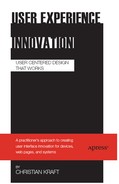Context awareness is the ability for a device, system, or web page to know the context that the user (or the product) is in. In several ways, context awareness can be seen as a separate technology that enables the product to detect things like where the user is, what time it is, what level of experience the user has, what the user has done before, what interests the user has, what the user may do next, and even what mood the user is in. Context awareness can be achieved by using technologies like GPS, IP address identification, user action history, sensors, timing devices, questionnaires, and similar.
Even though context awareness is “just” a technology, it is also a great source of user experience innovation. By knowing your user and the situation or mood he is in, you can provide a much more optimized user experience. You can tailor the solutions for the needs of the specific user, or even to the different needs of a particular user at a given time.
You can identify the general needs of your target users before designing the product, but with context awareness you can potentially detect which needs the user has right now. You may even be able to guess the tasks he is about to accomplish and the desires he has, also right now.
Context awareness can create positive surprises and wow, since you may be able to design a product that knows what the user wants.
However, context awareness requires a fine balance. Many users do not to like to be surveyed and monitored, since this touches on human needs about feeling safe and secure. Also, many users do not like when your product makes a bad guess and suggests something wrong.
The specific steps for creating innovation around context awareness are:
- Identify target user needs.
- Identify current sensing capabilities.
- Innovate context awareness.
- Document your results and verify solutions.
The approach for innovating using context awareness is similar to the process for innovation around technologies. In this chapter I will use the example of a relatively young family father (Figure 16-1) in a mature market. The product will be a modern car that has a number of sensing capabilities built in.


